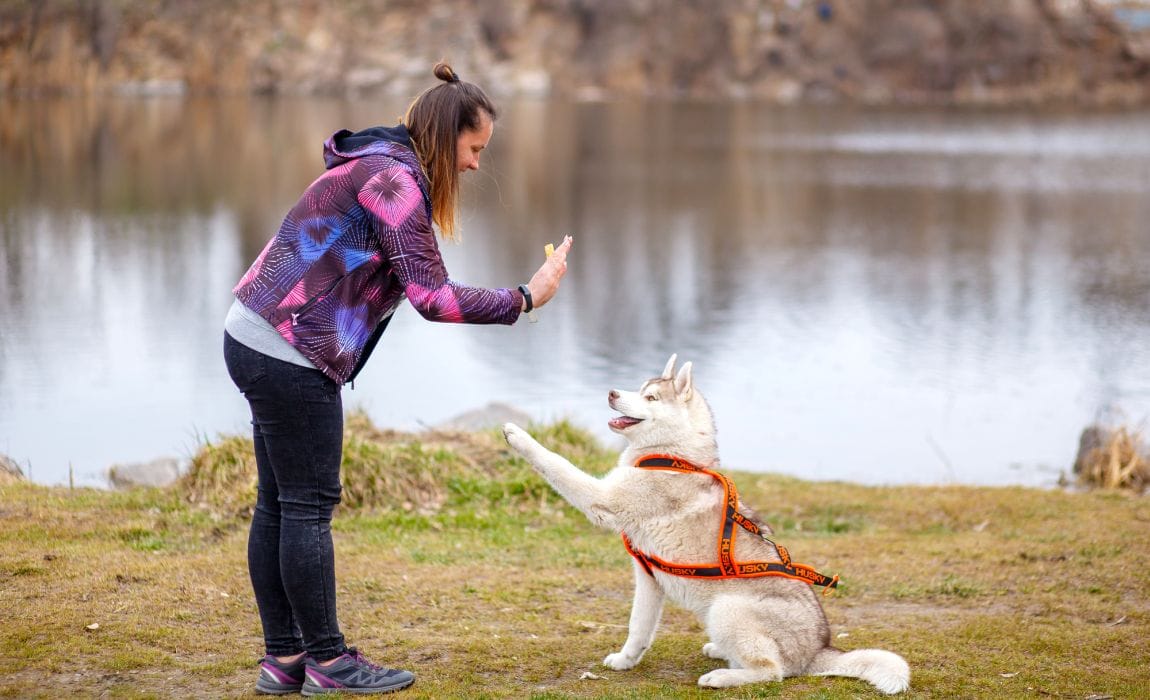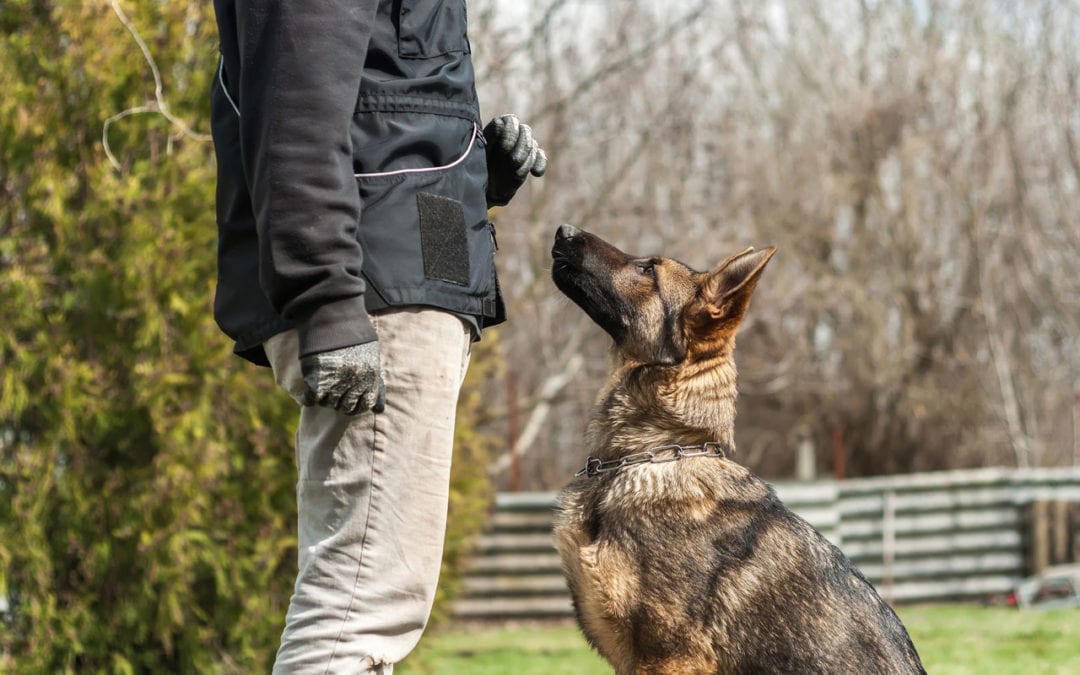Beginner's Guide to Effective Canine Training in the house
Effectively training a pet at home needs a nuanced understanding of canine behavior and effective communication strategies. Establishing clear training objectives, utilizing top quality rewards, and keeping consistency across household participants are essential elements. Incorporating training right into daily routines can enhance both engagement and retention.
Comprehending Pet Actions
Recognizing dog behavior is essential for efficient training and cultivating a harmonious partnership between humans and their canine buddies - Puppy Training. Pet dogs connect primarily with body movement, articulations, and faces, making it vital for proprietors to translate these signals precisely. Identifying habits such as tail wagging, growling, or trembling can offer understandings right into a pet's mood and purposes
Additionally, understanding the natural impulses of pets, such as their pack attitude, assists proprietors establish management duties within the home. This is important for developing an organized setting where dogs really feel safe and are much more receptive to training. Pet dogs are also affected by their socializing experiences; early direct exposure to various environments, people, and various other pets can substantially shape their habits later in life.
Typical behavioral problems, such as aggression, anxiety, or excessive barking, commonly stem from misunderstandings or unmet needs. Observing and attending to these issues promptly can avoid escalation and make certain a favorable training experience. By cultivating a deep understanding of pet dog behavior, owners can tailor their training methods to match their canine companions, eventually leading to a pleased and well-behaved family pet.

Essential Educating Devices
A fully equipped training room can dramatically improve the effectiveness of pet dog training at home. Important training devices ensure that both the fitness instructor and the pet can take part in efficient sessions that foster understanding and bonding.

Buying a strong chain and a comfy, well-fitting collar or harness is important for safety and control. These devices help establish boundaries and make certain the pet stays safe and secure during training. Additionally, a designated training area, without disturbances, help concentration for both the instructor and the canine.
Educating aids such as training pads, cones, or dexterity equipment can additionally boost the experience by introducing variety and difficulties. Having a note pad or electronic app for tracking progression can be very useful, enabling you to note successes and locations for improvement. Utilizing these vital tools will certainly create a positive training environment and lay the structure for efficient discovering.
Developing an Educating Routine
Establishing a constant training routine is essential for efficient dog training at home. A well-structured routine not only assists in strengthening desired behaviors yet likewise gives your pet dog with a feeling of safety and predictability. To create an effective training routine, begin by recognizing specific training goals, such as basic commands, leash strolling, or house-training.
Select a designated time each day for training sessions, ideally when your pet is alert and receptive. Procedure should be brief, approximately 5 to 15 minutes, to keep focus and avoid fatigue. Uniformity in timing and setting will certainly boost your dog's understanding experience.
Include training into everyday activities to enhance skills. For instance, technique commands throughout strolls or nourishment, which incorporates learning into all-natural routines. Additionally, stay versatile and change the routine as needed, fitting your dog's energy degrees and state of mind.
Positive Support Methods

When executing positive reinforcement, it is important to pick incentives that are motivating for your pet. High-value deals with, such as tiny pieces of hen or cheese, can be especially reliable throughout training sessions. Additionally, varying the rewards can maintain your pet's rate of interest and excitement.
Beginning with easy commands, like "sit" or "stay," and progressively development to more intricate tasks. Consistency is essential; make sure that all relative use the exact same commands and reward systems to avoid confusion.
Additionally, it is crucial to remain individual and stay clear of disappointment. Pets, like humans, discover at their very own speed. By fostering a supportive training atmosphere with favorable reinforcement, you can boost your pet's understanding experience while strengthening the bond between you and your furry companion, preparing for effective training end results.
Common Training Obstacles
While training a dog in your home can be a rewarding experience, it frequently features a collection of usual difficulties that can evaluate both patience and uniformity. One common concern is diversion. Full Article Canines might end up being conveniently browse this site averted by noises, motions, and even fragrances in their setting, making it difficult to maintain their focus throughout training sessions.
Another difficulty is variance in commands and reinforcement. It can perplex the pet dog and impede progression if family participants make use of different cues or benefits. Developing a unified strategy is necessary for effective interaction.
Additionally, pets can experience frustration or stress, especially if they do not recognize what is expected of them. This can bring about undesirable actions, such as chewing or barking.
Finally, the timing of support is vital. Postponed rewards can diminish the efficiency of favorable support, as pet dogs may stop working to link the actions with the incentive.
Getting over these difficulties requires dedication, clear communication, and a structured training strategy - Puppy Training. Identifying and resolving these usual challenges will certainly lead the way for a much more satisfying and successful training experience at home
Final Thought
In verdict, successful dog training at home demands a thorough understanding of canine actions and effective interaction approaches. By developing clear training objectives and making use of high-quality treats together with positive support, the training procedure comes to be a lot more gratifying for both the trainer and the canine. Flexibility, uniformity, and persistence are crucial components that promote discovering. Eventually, incorporating training into day-to-day regimens improves the bond between canine and proprietor, making the experience both enjoyable and efficient.
Establishing a consistent training regimen is essential for effective pet training at home.Positive support strategies are basic to reliable pet dog training, promoting wanted behaviors with benefits rather than punishment. By cultivating an encouraging training environment via favorable support, you can boost your pet's discovering experience while reinforcing the bond in between you and your furry buddy, laying the foundation for effective training results.
In verdict, effective pet training at home demands a comprehensive understanding of canine habits and efficient interaction methods. By establishing clear training goals and making use of high-quality deals with together with positive support, click here to find out more the training procedure ends up being much more fulfilling for both the instructor and the pet dog.